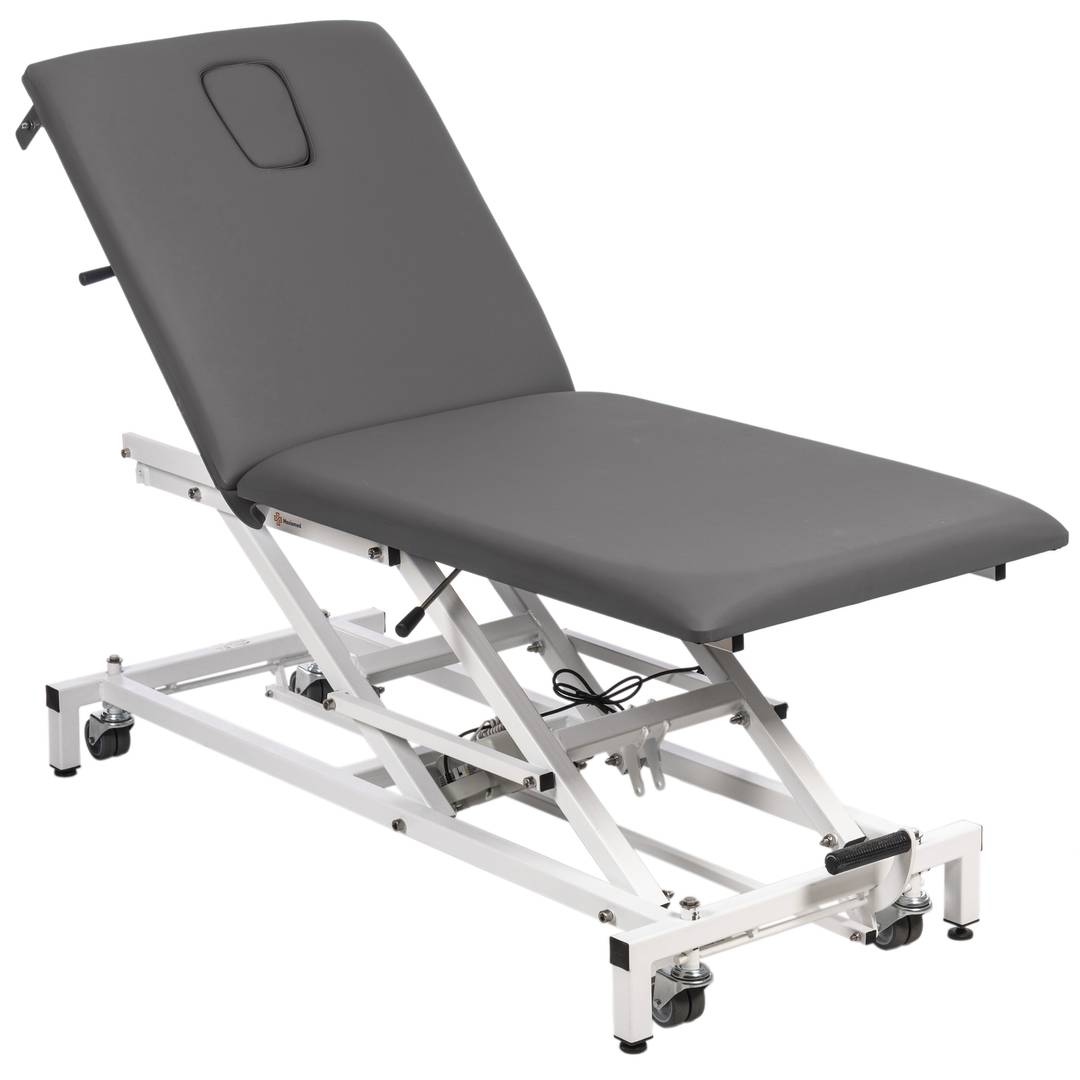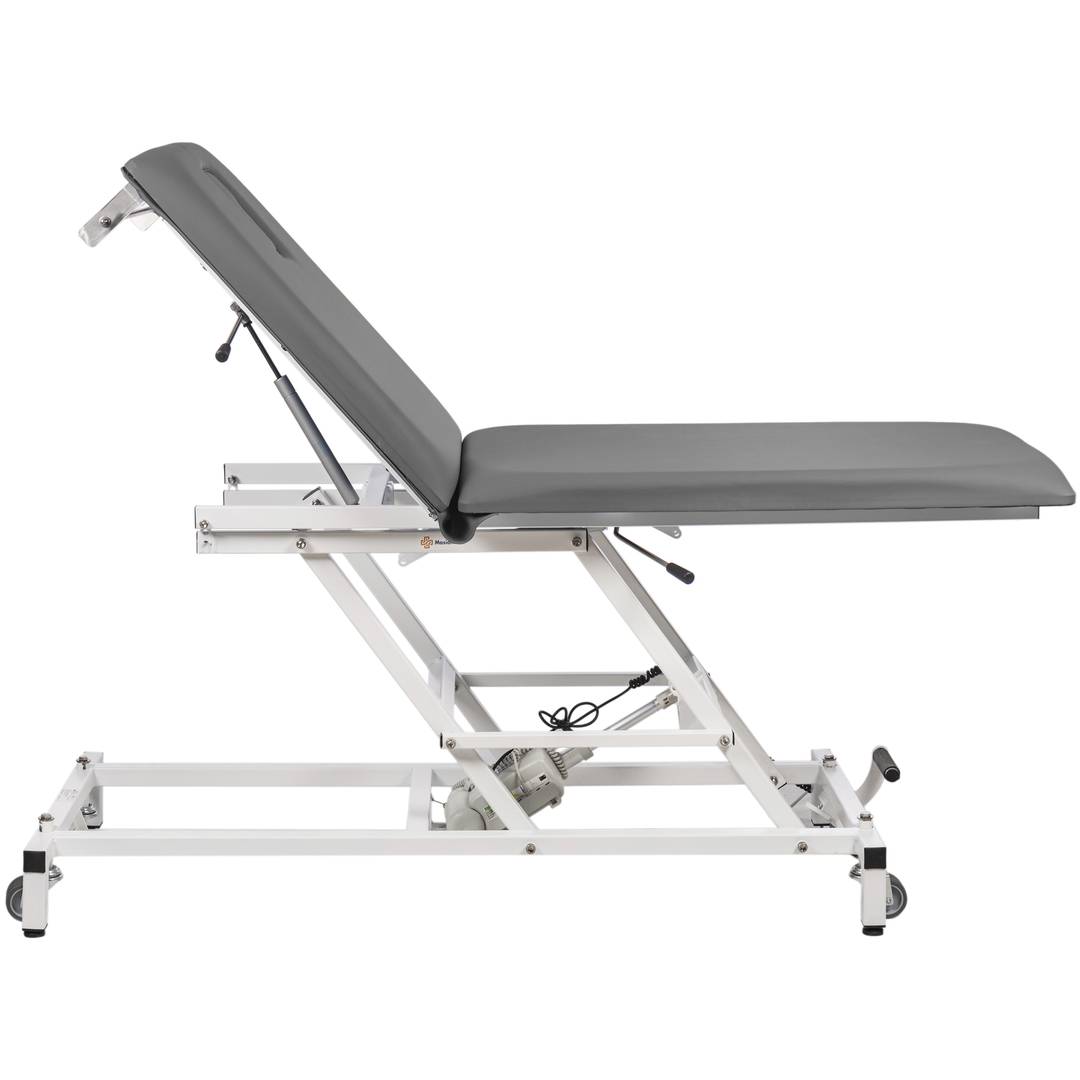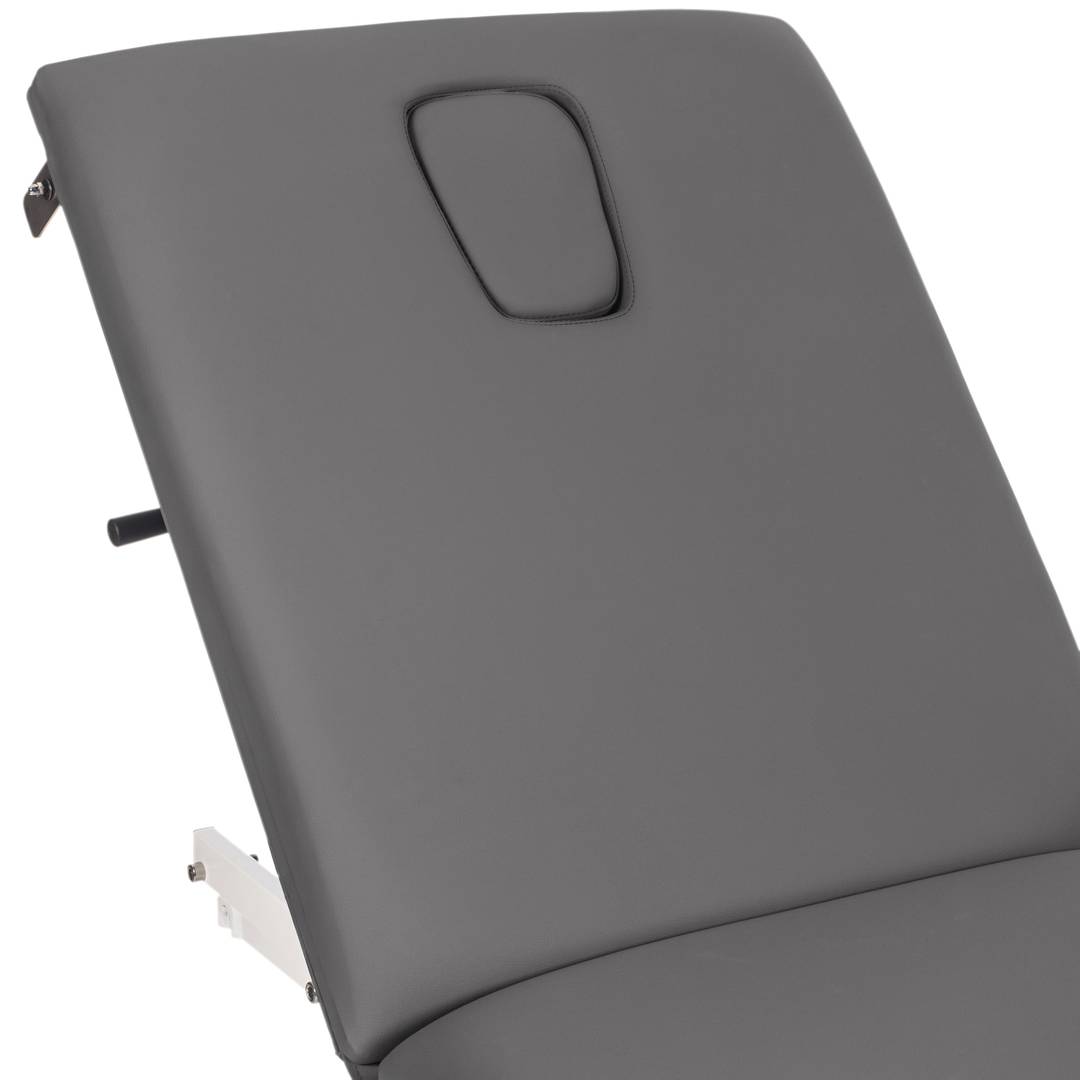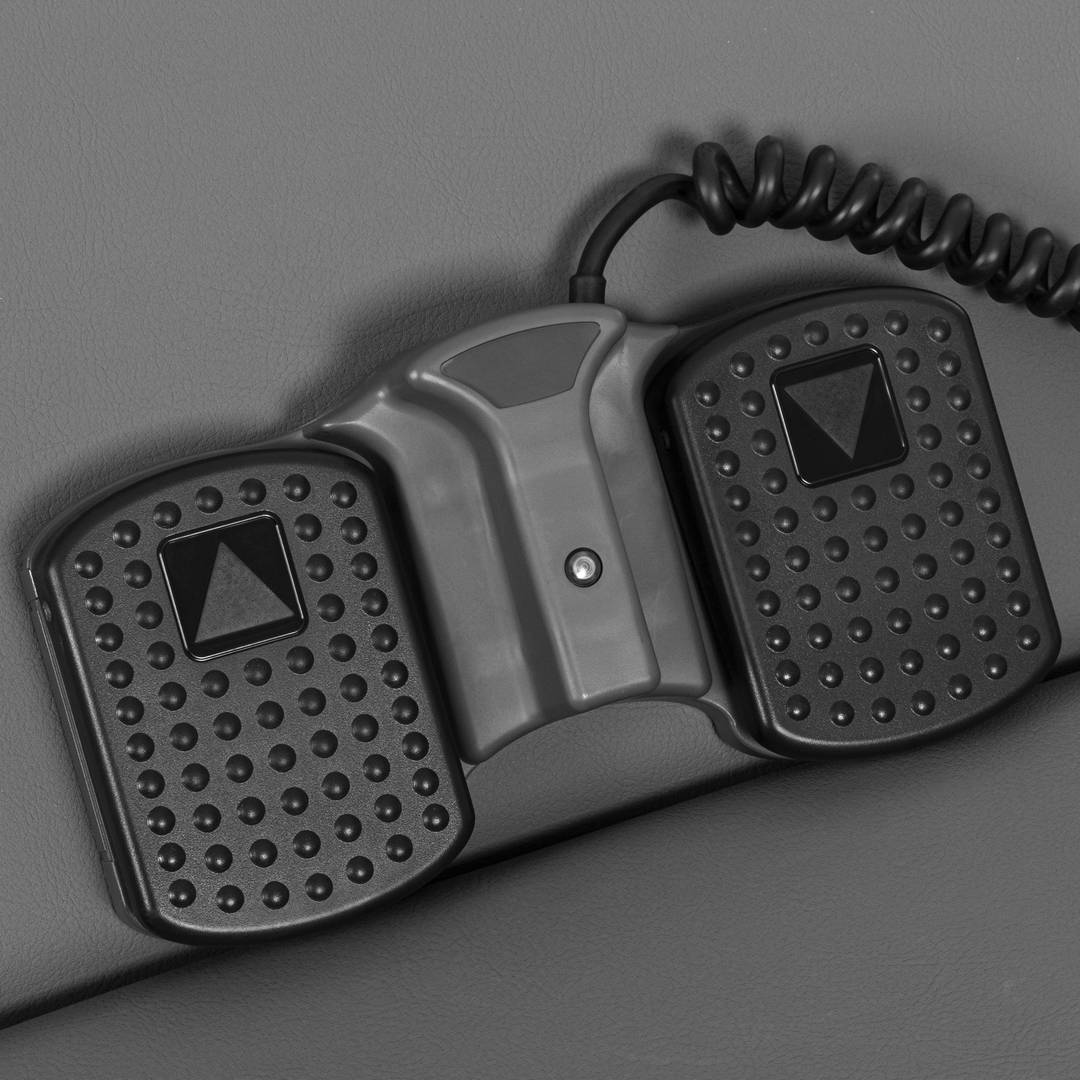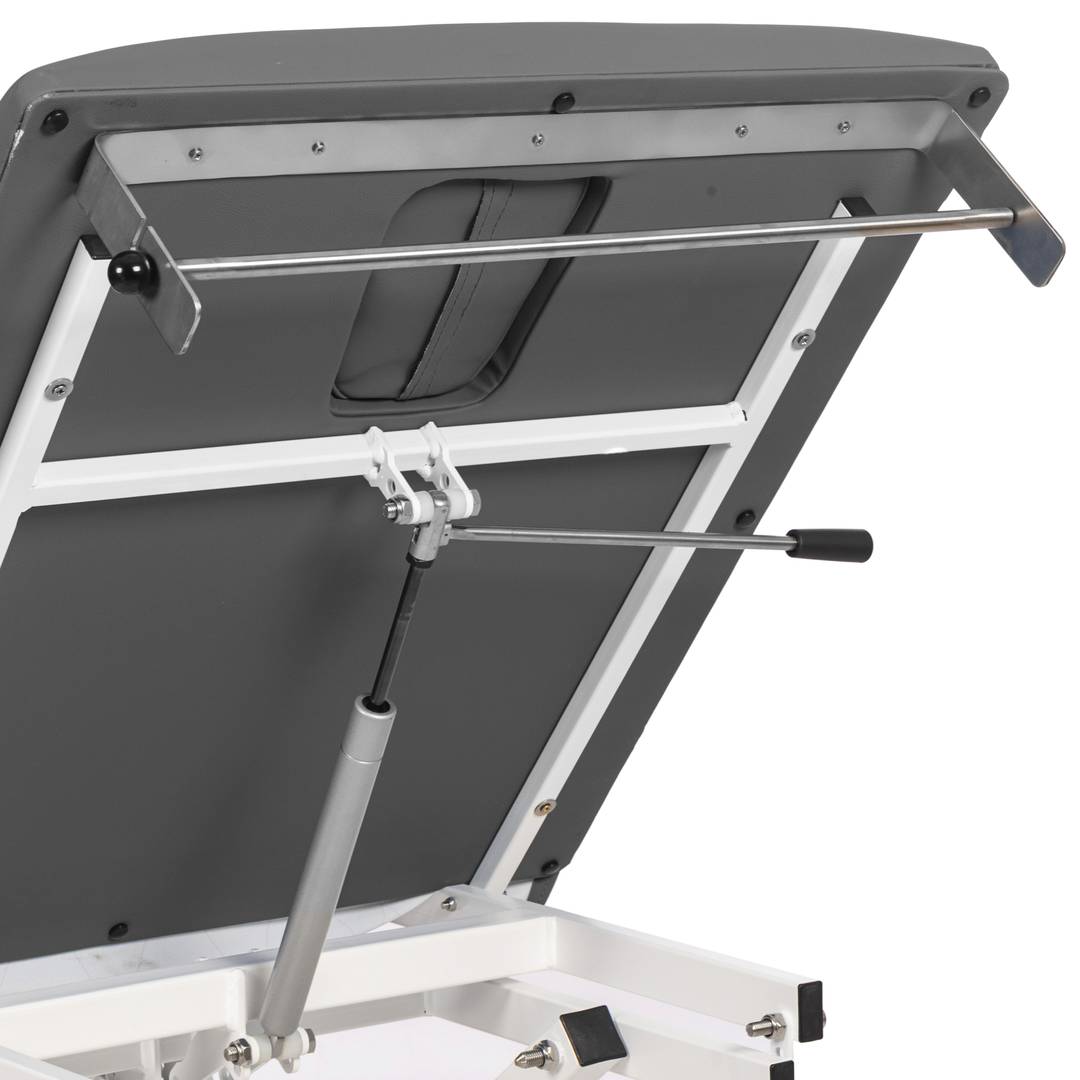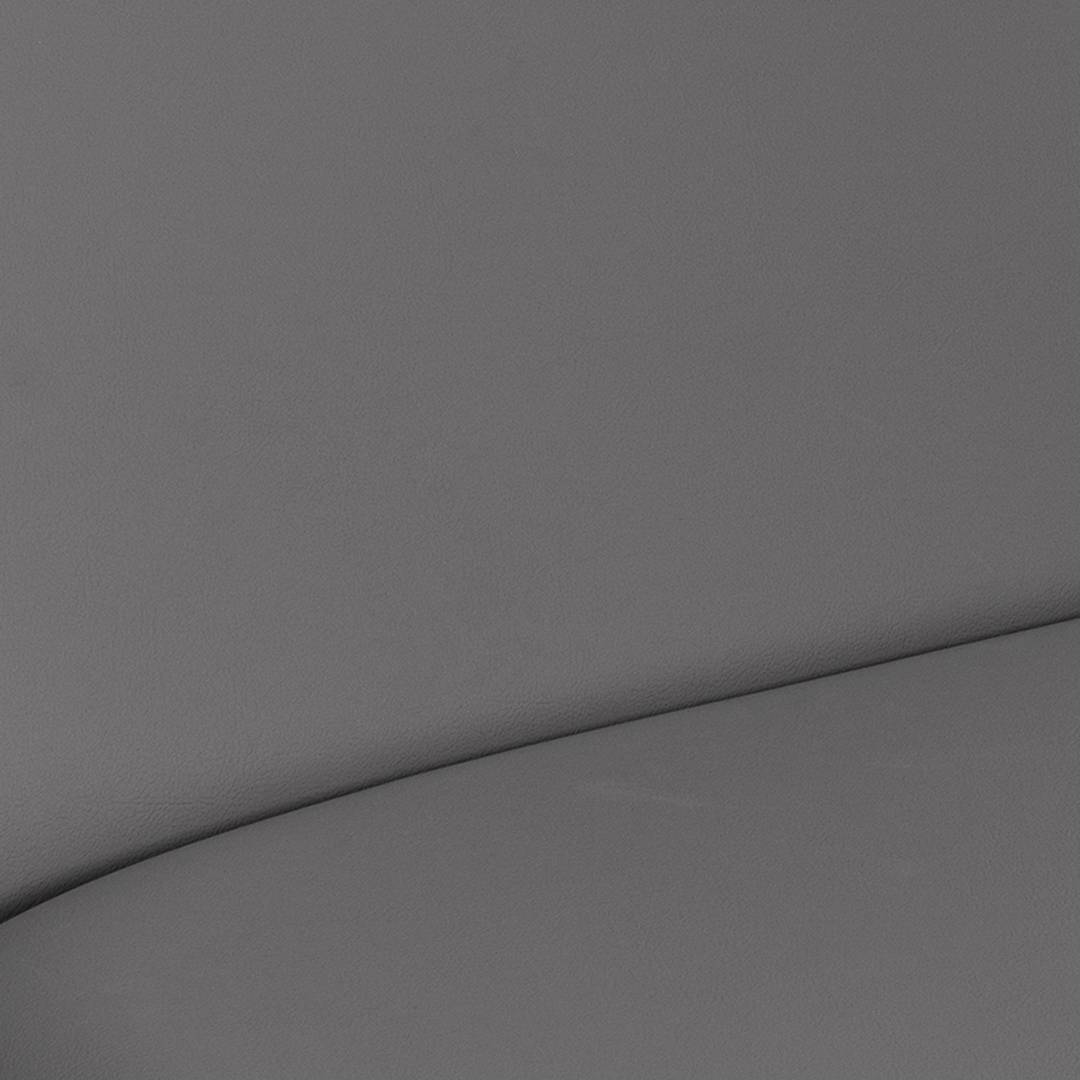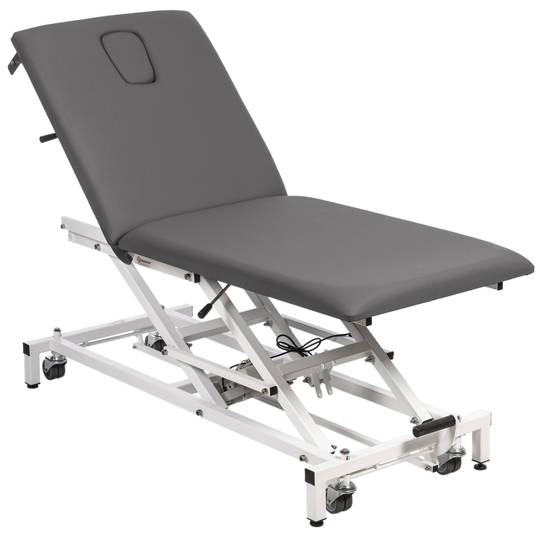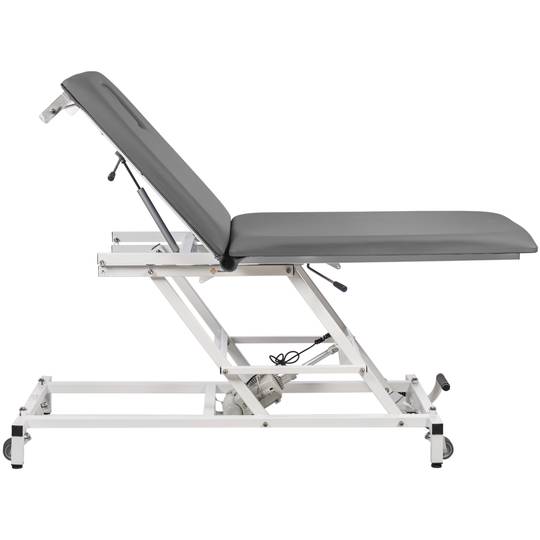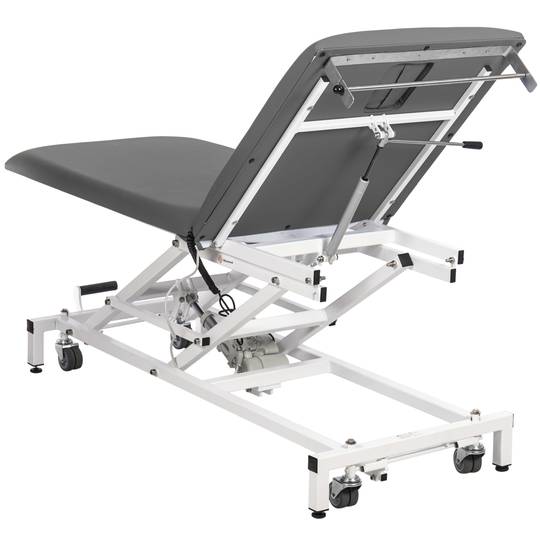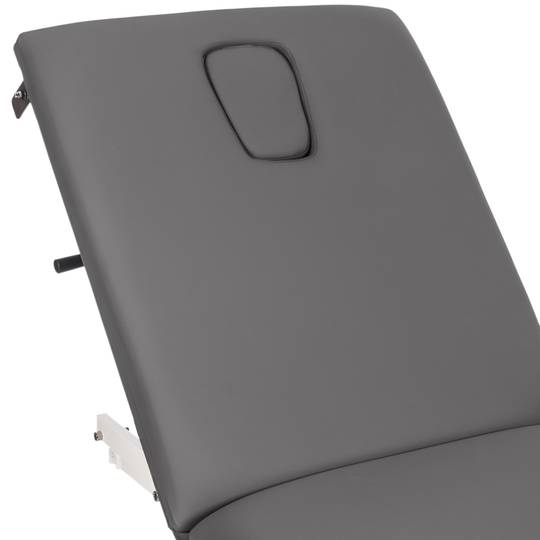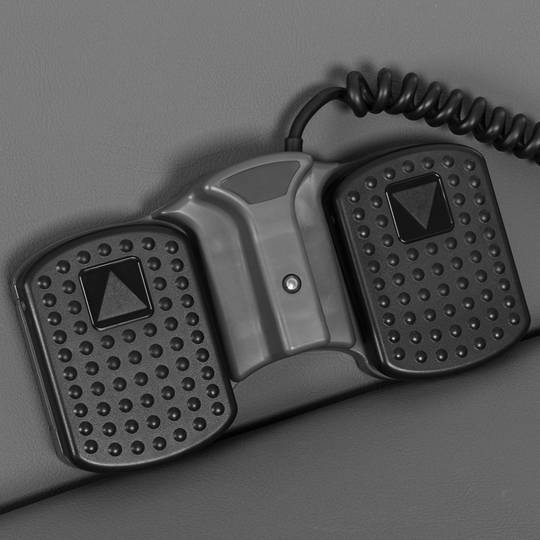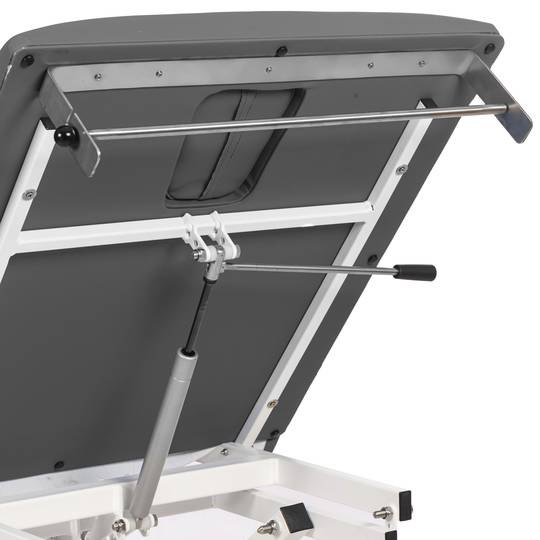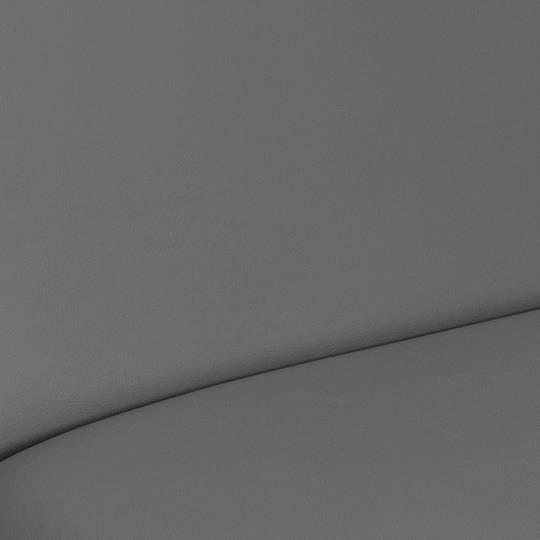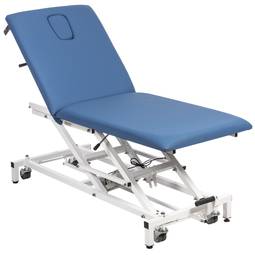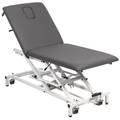08/15/2025 2:49 p.m.
https://cablematic.com/en/products/gray-two-section-examination-stretcher-with-electric-lift-HO153/
https://cablematic.com/en/products/gray-two-section-examination-stretcher-with-electric-lift-HO153/
Gray two-section examination stretcher with electric lift
REF: HO153
Specifications
- Two-section examination stretcher with epoxy-painted steel frame.
- Height adjustment by electric motor: from 55 cm to 85 cm.
- Adjustable headrest up to 72º by means of a gas piston, with facial hole and cover.
- Upholstered in 7 cm foam (density 25 kg/m³), covered with fire-resistant M2 leatherette, antistatic, antibacterial and antifungal.
- Load capacity: up to 250 kg.
PVP
€1,380.00
Price including VAT:
€1,380.00
PVD
€1,380.00
PVP: Retail price.
Check conditions.
PVP: Sale price to distributors.
Check conditions.
Buy before:
Receive it:
5 business days
Delivery times are approximate. Cablematic is not responsible for delays.
warranty
returns
safe
Specifications
- Two-section examination stretcher with epoxy-painted steel frame.
- Height adjustment by electric motor: from 55 cm to 85 cm.
- Adjustable headrest up to 72º by means of a gas piston, with facial hole and cover.
- Upholstered in 7 cm foam (density 25 kg/m³), covered with fire-resistant M2 leatherette, antistatic, antibacterial and antifungal.
- Load capacity: up to 250 kg.
Keywords
Did not find what you were looking for? These topic could help you
More info
Two-section examination table with electrical height adjustment, designed to provide maximum stability, comfort, and accessibility during medical examinations. Its robust structure and hygienic upholstery make it ideal for healthcare facilities seeking reliability and functionality.
Specs
Specs
- Two-section examination stretcher with epoxy-painted steel frame.
- Height adjustment by electric motor: from 55 cm to 85 cm.
- Adjustable headrest up to 72º by means of a gas piston, with facial hole and cover.
- Upholstered in 7 cm foam (density 25 kg/m³), covered with fire-resistant M2 leatherette, antistatic, antibacterial and antifungal.
- Load capacity: up to 250 kg.
- Trendelenburg position and pedal operation.
- Pedal-activated retractable wheels at the base of the footboard.
- Removable studs to ensure stability on uneven floors.
- Includes toilet paper holder in the headboard.
- Approximate dimensions: 1920 x 700 mm.
- Gray.
- Gross Weight: 60.0 kg
- Product size (width x depth x height): 70.0 x 240.0 x 85.0 cm
- Number of packages: 1
- Packages size: 240.0 x 85.0 x 80.0 cm
- Master-pack: 1
Technical terms
- Trendelenburg
Trendelenburg
The Trendelenburg is a position in which a patient lies down with the head lower than the feet. This position is used in surgery and intensive care to improve blood circulation to the brain and abdominal organs.
For example, it is used for patients who are undergoing surgery in the pelvic or abdominal area, as it helps reduce the amount of bleeding during surgery.
The Trendelenburg position is achieved by placing a board under the bottom of the patient's bed so that the head is lower than the feet. The inclination is usually around 20-30 degrees. This position can help improve blood flow to the brain, as gravity helps increase pressure in the veins of the neck, which in turn helps increase venous return.
Additionally, in patients with heart failure, the Trendelenburg position may help improve blood flow to the heart and abdominal organs, which may be beneficial for organ oxygenation and cardiovascular function.
However, this position is not suitable for all patients, in some cases it can cause problems such as decreased blood flow to the heart, decreased pulmonary oxygenation, or even intraocular or ocular pressure. Therefore, it is necessary to evaluate each particular case and the needs of the patient before making the decision to use the Trendelenburg position.
For example, it is used for patients who are undergoing surgery in the pelvic or abdominal area, as it helps reduce the amount of bleeding during surgery.
The Trendelenburg position is achieved by placing a board under the bottom of the patient's bed so that the head is lower than the feet. The inclination is usually around 20-30 degrees. This position can help improve blood flow to the brain, as gravity helps increase pressure in the veins of the neck, which in turn helps increase venous return.
Additionally, in patients with heart failure, the Trendelenburg position may help improve blood flow to the heart and abdominal organs, which may be beneficial for organ oxygenation and cardiovascular function.
However, this position is not suitable for all patients, in some cases it can cause problems such as decreased blood flow to the heart, decreased pulmonary oxygenation, or even intraocular or ocular pressure. Therefore, it is necessary to evaluate each particular case and the needs of the patient before making the decision to use the Trendelenburg position.


